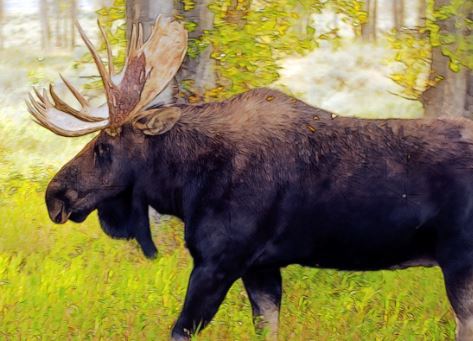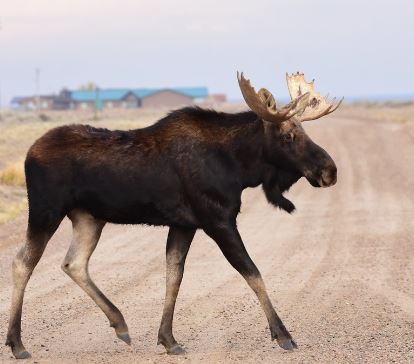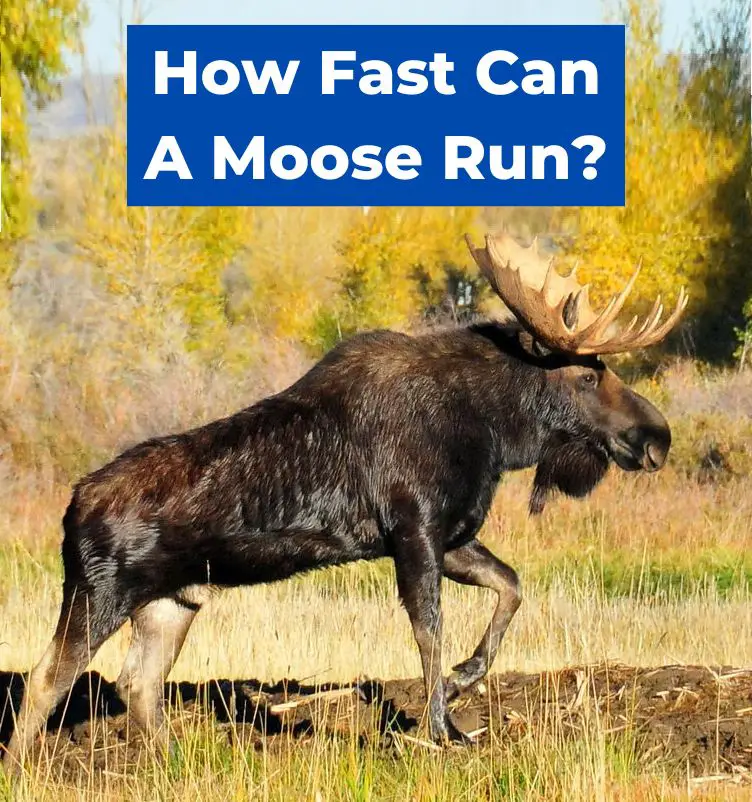Moose are the largest member of the deer family and are considered one of the most majestic mammals in North America. These massive creatures can weigh up to 1,800 pounds and stand over 6 feet tall at the shoulder. Despite their size, moose are known for their agility and speed. Many people wonder, how fast can a moose run?
Moose can run at a speed of up to 35 miles per hour over short distances and up to 20 miles per hour for longer distances.
However, they are not able to maintain this speed for long periods and typically need to rest after running at this pace for around 300 yards. Moose are also strong swimmers and can swim up to 6 miles per hour for long distances.
Understanding the speed and agility of moose is important for anyone who lives or works in areas where these creatures are present. By knowing how fast moose can run, individuals can take appropriate safety precautions and avoid potential danger.
In the following sections, we will explore the topic of how fast can a moose run in more detail and provide additional information about these fascinating creatures.
Speed: How Fast Is A Moose?

Maximum Speed
Moose are known for their impressive speed despite their large size. An average moose can run up to 35 miles per hour (56.3 kilometers per hour) for short distances.
This speed is impressive considering their weight, which can range from 800 to 1500 pounds (362 to 680 kilograms).
Sustained Speed
While moose can reach impressive speeds, they cannot maintain this pace for extended periods.
Moose can run at a sustained speed of around 20 miles per hour (32 kilometers per hour) for longer runs.
Short Distances
Moose can reach their maximum speed of 35 miles per hour for short distances, usually around 300 yards to escape from predators and protect their young.
Moose calves can run at a speed of 22 miles per hour (35 kilometers per hour) from as early as two weeks old.
Take a look at this video of a moose keeping pace with a car while running along side it:
Physical Characteristics
Size
Moose are the largest members of the deer family, standing up to 6.5 feet tall at the shoulder and weighing up to 1,500 pounds.
Male moose, also known as bulls, are typically larger than females, also known as cows.
Legs
Moose have long, slender legs that are well-adapted for their habitat.
Their long legs allow them to wade through deep water and snow, as well as navigate through dense forests.
Moose also have large, broad hooves that act as snowshoes, allowing them to walk on top of deep snow.
Despite their large size, moose are surprisingly fast runners.
Moose are able to achieve their speed thanks to their powerful leg muscles and long stride.
They use their front legs and back legs to propel themselves forward at surprising speeds of 20 mph to 35 mph.
Moose are impressive animals with unique physical characteristics that allow them to thrive in their environment.
Their long legs and large hooves make them well-suited for navigating through deep snow and dense forests, while their impressive speed allows them to escape predators when needed.
Behavior

Moose are generally docile creatures, but they can become aggressive if they feel threatened.
During mating season, male moose can become more aggressive and territorial.
Females give birth to one calf, and they are protective of their young.
Moose are also excellent swimmers and can hold their breath underwater for up to 30 seconds.
Mating Season
During mating season, male moose become more aggressive and territorial.
They will often engage in battles with other males to establish dominance and win the right to mate with females.
These battles can be violent and can result in serious injury or death.
Threat Response
Moose are generally docile creatures, but they can become aggressive if they feel threatened.
When a moose feels threatened, it may display warning signs such as flattening its ears, raising the hair on its back, and stomping its feet.
If the threat persists, the moose may charge or attack.
See Related: Does Bear Spray Work On Moose?
Attacks
Moose attacks are rare, but they can be dangerous. If a moose feels threatened or cornered, it may charge or attack.
Moose attacks can result in serious injury or death.
If you encounter a moose in the wild, it is best to keep your distance and give the animal plenty of space.
Swimming
Moose are excellent swimmers and can hold their breath underwater for up to 30 seconds., and are capable of swimming long distances at speeds of up to 6 mph.
If a moose is threatened or feels the need to escape, it may take to the water to avoid danger.
In summary, moose are generally docile creatures, but they can become aggressive if they feel threatened or if during mating season.
If you encounter a moose in the wild, it is best to keep your distance and give the animal plenty of space.

